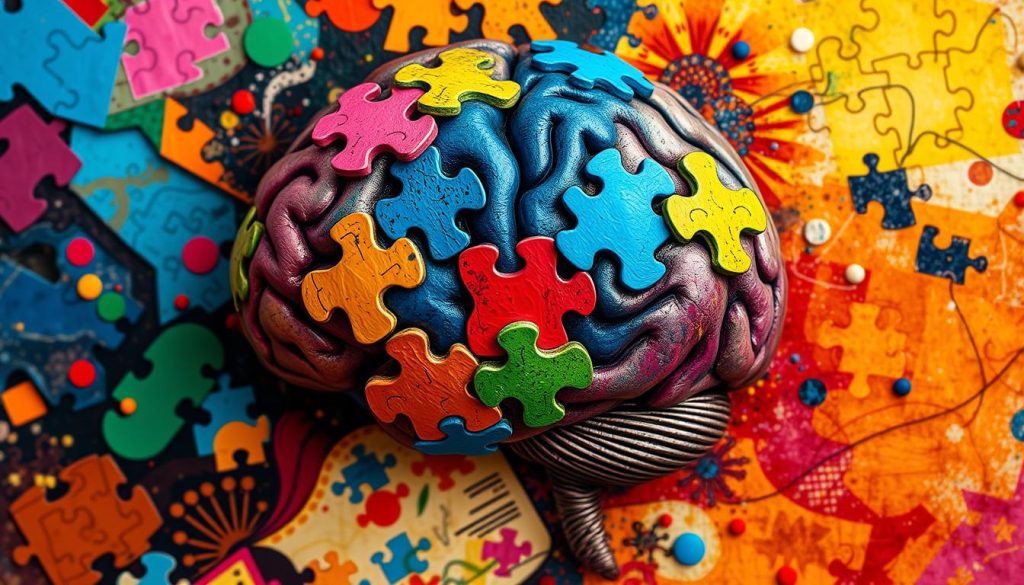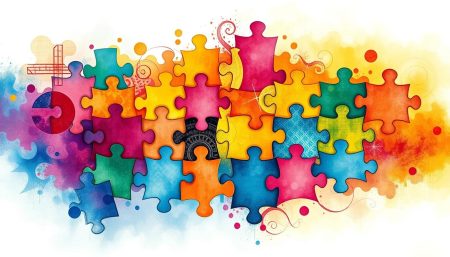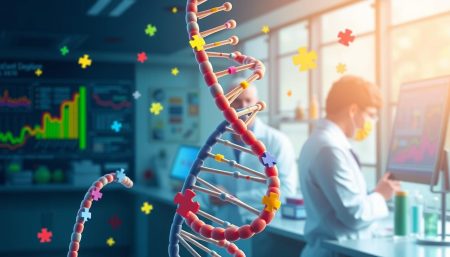The DSM-5 autism spectrum disorder classification is a big step forward. It changes how we diagnose and understand this complex condition. The fifth edition of the Diagnostic and Statistical Manual of Mental Disorders (DSM-5) changed how doctors identify and talk about autism spectrum disorder.
This change gives a more detailed view of ASD. It shows how different people can have autism in different ways.
The American Psychiatric Association created the DSM-5. It has criteria that doctors use all over the world. This ensures diagnoses are up-to-date and based on the latest research.
Research from the Centers for Disease Control (CDC) and the National Institute of Mental Health helped create these criteria. They are like blueprints for understanding and treating ASD.
The DSM-5 autism spectrum disorder criteria are more than just a tool. They help connect people with the care and support they need. Let’s dive deeper into how the autism spectrum disorder diagnosis dsm 5 has changed lives across the country.
Introduction to DSM-5 and Autism Spectrum Disorder
The fifth edition of the Diagnostic and Statistical Manual of Mental Disorders (DSM-5) was a big step forward. It updated how we diagnose mental health issues. The biggest change was in how we diagnose autism spectrum disorder (ASD).
ASD makes social interaction, communication, and certain behaviors hard. Knowing the autism spectrum disorder DSM 5 criteria is key. It helps in research, education, and planning resources. DSM-5 made diagnosing ASD easier by combining different conditions into one.
| DSM-IV Criteria | DSM-5 Revision |
|---|---|
| Multiaxial System | Nonaxial Diagnosis |
| Autistic Disorder, Asperger’s Disorder, CDD, PDD-NOS | Consolidated under Autism Spectrum Disorder |
| Predominantly clinically based diagnoses | Enhanced criteria specificity |
| Separate Social and Communication Criteria | Merged Social Communication Criteria |
- Consistency in diagnosis across varied clinical settings
- Improved specificity reduces misdiagnosis
- Facilitates easier access to services
- Enables more targeted research
- Broadened understanding of ASD
The changes in the autism spectrum disorder DSM 5 criteria are more than just words. They help professionals, researchers, and supporters better understand ASD. Knowing these criteria is vital for those involved in autism care, support, or research.
The Evolution of Autism Diagnosis: DSM-5 Changes
The move from DSM-IV to DSM-5 changed how we diagnose autism spectrum disorder. This update came from years of research and clinical practice. It shows a deeper understanding of autism and aims to improve diagnosis and care.
From DSM-IV to DSM-5: What’s New
The DSM-5 changed how we diagnose autism spectrum disorder. Before, DSM-IV had different subtypes like autistic disorder and Asperger’s syndrome. Now, DSM-5 combines them into one category called ASD. This makes diagnosis simpler and ensures a consistent approach based on severity and support needs.
dsm 5 asd criteria also added a new aspect—severity levels. These levels help describe the support an individual needs.
Understanding the Rationale Behind Revised Criteria
The main reason for the DSM-5 changes was to clear up confusion from the old subtypes. Diagnosing autism spectrum disorder is now more straightforward. It focuses on the range of symptoms and their intensity.
This change moves away from labels that might not fully capture an individual’s challenges. It emphasizes a personalized approach to diagnosis. This is key for creating effective intervention strategies.
Impact of Changes on Diagnosis and Care
The updated diagnostic criteria for autism spectrum disorder in DSM-5 show a better understanding of autism. This change improves both diagnosis and care. It leads to more tailored support plans for patients.
These criteria help doctors consider a wider range of symptoms. This results in interventions that better match individual needs, moving away from a one-size-fits-all approach.
Autism Spectrum Disorder Diagnostic Criteria in DSM-5
The DSM-5 has specific rules for diagnosing Autism Spectrum Disorder (ASD). These rules focus on problems with social communication and interaction. They also look at repetitive behaviors. This part talks about the key points for diagnosing ASD correctly.
Core Symptoms of ASD in DSM-5
The DSM-5 says ASD is marked by ongoing social communication and interaction problems. These issues can be seen in many situations. They include trouble with social skills, understanding nonverbal cues, and keeping relationships.
Social Communication and Interaction: A Closer Look
Challenges in social communication are a big part of ASD, according to the DSM-5. These can be seen in sharing interests, emotions, or not starting or responding to social talks.
Patterns of Repetitive Behaviors in ASD
ASD also has repetitive behaviors, interests, or activities. The DSM-5 lists behaviors like repetitive movements, sticking to routines too much, or following strict patterns in talking or acting.
| Criteria | Description | Examples |
|---|---|---|
| Social Communication | Issues such as absence of expected normal social behaviors | Lack of eye contact, difficulties understanding gestures |
| Repetitive Behaviors | Actions that are excessively repetitive and do not serve a logical purpose | Repetitive lining up of toys, echolalia |
| Interest Patterns | Highly restricted, fixated interests that are abnormal in intensity | Preoccupation with unusual objects, excessive knowledge about a single topic |
dsm-5 autism spectrum disorder: Defining the Spectrum
The DSM-5 update changes how we diagnose Autism Spectrum Disorder (ASD). It shows that ASD symptoms can vary a lot. This change helps doctors give more personalized care.
The idea of ‘spectrum’ in the autism spectrum disorder DSM 5 PDF means no two people are the same. Each person’s diagnosis can include a wide range of symptoms and abilities.
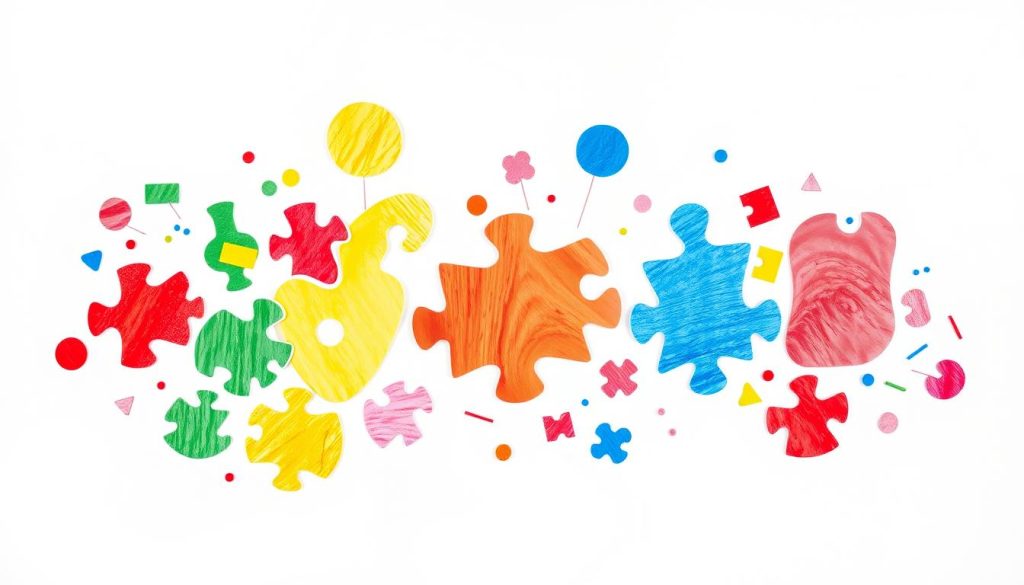
The DSM-5 criteria help doctors tailor treatments to each person’s needs. This flexible approach helps recognize the unique behaviors and abilities of each person. It makes diagnosis more accurate and helps everyone understand ASD better.
- Social Communication Challenges: People with ASD may have trouble with normal conversations or sharing interests and feelings.
- Behavioral Patterns: They might repeat actions, use objects in special ways, or stick to routines too much.
- Sensory Sensitivities: Some people with ASD might be too sensitive to sounds or lights, or have unusual interests in sensory things.
The autism spectrum disorder DSM 5 PDF helps us understand ASD better. It gives detailed classifications and examples. This groundwork is key for developing treatments that fit each person’s needs.
With the DSM-5, professionals can better diagnose and support people with ASD. This ensures each person gets the care they need to do well.
Interpreting DSM-5 Criteria for Autism Spectrum Disorder
The DSM-5 criteria have changed how we diagnose and manage autism. This part talks about how to use these criteria in real-world settings. It highlights the need for a deep understanding to make accurate diagnoses.
Navigating Clinical Assessments with DSM-5
Assessing autism is complex and needs a good grasp of the DSM-5 criteria. Doctors must look at social communication, interaction, and repetitive behaviors. They use specific examples and observations to meet DSM-5 standards.
Understanding Severity Levels and Specifiers
The DSM-5 has a system to rate autism severity, from “requiring support” to “requiring very substantial support.” This helps doctors describe the needed support level. It also considers each person’s unique situation. This approach helps tailor treatments to fit each patient’s needs.
Case Examples: DSM-5 in Practice
Let’s look at a case where a child barely talks and repeats actions. The doctor will assess the severity and any other conditions. They use DSM-5 to classify the autism and suggest the right treatments.
Significance of Early Diagnosis of Autism Spectrum Disorder
Early diagnosis of autism spectrum disorder is key to improving life quality for those with ASD. Using the Diagnostic and Statistical Manual of Mental Disorders, Fifth Edition (DSM-5), experts can spot autism early in a child’s life. This early catch is vital for starting treatment on time.
Early diagnosis brings many benefits, backed by research in Pediatrics and Early Childhood Intervention. Early help can greatly boost communication, social skills, and adaptability. This is because the brain is most flexible at young ages, making early detection essential.
Autism Speaks and others highlight the need for early detection and the DSM-5’s role in setting clear diagnosis criteria. These guidelines make the diagnosis process smoother, ensuring timely support for those who need it.
| Age of Diagnosis | Benefits of Early Intervention | Source of Evidence |
|---|---|---|
| Under 3 years | Maximal improvement in social skills | Journal of Early Intervention |
| 3-5 years | Significant gains in IQ and language abilities | Pediatrics |
| 5+ years | Limited but important progress in adaptability and coping skills | Autism Speaks |
Spotting autism signs as the DSM-5 describes and getting a diagnosis can unlock special resources. These resources meet the unique needs of each person. This helps the child, supports families, and helps teachers create a nurturing environment for growth.
- Enhanced learning abilities
- Improved social interactions
- Greater independence
So, knowing and using the DSM-5 guidelines for autism early in life is not just good; it’s critical for a fulfilling life.
Challenges and Controversies in DSM-5 ASD Diagnosis
The update to the DSM-5 criteria for autism spectrum disorder has sparked a lot of debate. This section looks into the challenges and controversies of diagnosing DSM-5 ASD. It presents a balanced view through research and expert opinions.
Addressing Criticisms of the DSM-5 Approach
From the start, the DSM-5 has been under fire for its ASD diagnosis method. Critics say the new criteria might miss the unique traits of autism. They also worry that it could leave out those who are less severely affected but need help.
The Debate Over DSM-5’s Sensitivity and Specificity
The DSM-5 ASD criteria’s sensitivity and specificity are key to accurate diagnosis. Sensitivity is about catching those with the disorder, while specificity is about not missing those without it. Experts debate if DSM-5 might miss some cases or misdiagnose others, mainly in tricky cases.
Inclusivity vs. Exclusivity in ASD Diagnosis
The debate on inclusivity versus exclusivity in autism diagnosis is fierce. The DSM-5 tries to cover a wide range of autism types. But, it faces the challenge of being both wide-reaching and precise in diagnosis.
Intervention Strategies Aligned with DSM-5 ASD Criteria
Following the diagnostic criteria for autism spectrum disorder in the DSM-5 is key for effective help. This part looks at different ways to help, like behavior, education, and growth plans.
Behavioral help is a top choice because it’s backed by solid research. Methods like Applied Behavior Analysis (ABA) now fit better with the DSM-5. They aim to boost social skills and cut down bad behaviors.
Education plans have also changed with the DSM-5. Now, Individualized Education Programs (IEPs) are made just for students with autism. They take into account the specific needs and symptoms of each student.
Developmental help, like the Developmental, Individual Differences, Relationship-Based (DIR) approach, also matches the DSM-5. It focuses on emotional and relationship growth. These are key areas for people with autism.
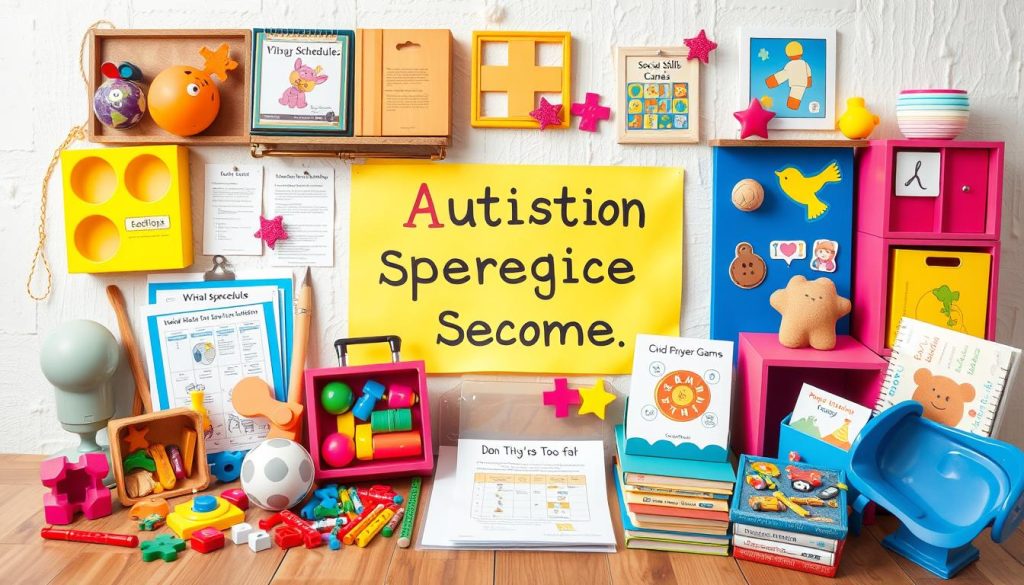
| Intervention Type | Focus | Alignment with DSM-5 Criteria |
|---|---|---|
| Applied Behavior Analysis (ABA) | Social Skills and Behavior | Directly addresses the social communication criteria and restrictive behaviors. |
| Individualized Education Program (IEP) | Educational Goals | Customizes learning approaches based on the detailed diagnostic profile in DSM-5. |
| Developmental, Individual Difference, Relationship-Based (DIR) | Emotional and Relational Development | Focuses on early developmental stages directly correlating with criteria for social communication deficits. |
By using these focused interventions, we can give more tailored and helpful support to those with autism. This way, we help them reach their full growth and fit better into their communities.
The Role of Healthcare Providers in DSM-5 ASD Diagnosis
Healthcare providers play a key role in diagnosing dsm-5 autism spectrum disorder. They need to be well-trained and work together with families. This ensures a precise and helpful diagnosis.
Training for Professionals in Using DSM-5
Professionals must know how to use DSM-5 to diagnose autism. They go through special training programs. These programs teach them about the core symptoms and how to tell different levels of severity apart.
Collaboration Among Multidisciplinary Teams
Diagnosing autism is a team effort. It involves psychologists, pediatricians, speech therapists, and educators. Working together improves the accuracy of the diagnosis. This team approach also brings different treatment ideas to the table.
Family Involvement in the Diagnostic Process
Families are very important in the diagnosis of autism. They share important information about the person’s daily life. This helps in making an accurate diagnosis. Family involvement also creates a supportive environment for managing autism.
Understanding Comorbid Conditions in DSM-5 Autism Diagnosis
Comorbid conditions often come with autism, making diagnosis harder. The DSM-5 lists many disorders that can happen with autism. These affect how we treat and manage the condition.
Anxiety disorders and attention-deficit/hyperactivity disorder (ADHD) are common. It’s key to spot these to create full care plans.
This part looks at these common conditions. It shows how they affect autism and why we need a complete approach based on DSM-5 criteria.
- Learn how each condition affects autism.
- Find ways to tell autism behaviors from symptoms of other conditions.
- See why treating both autism and other conditions together is important.
The DSM-5 helps doctors diagnose ASD right. It also helps find and treat other conditions that come with it.
| Comorbid Condition | Effects on Autism | DSM-5 Identification Notes |
|---|---|---|
| Anxiety Disorders | Can make social withdrawal worse and increase sensory sensitivities | Look for excessive worry not related to autistic social interactions |
| ADHD | Can make it hard to focus and increase impulsivity, making behavior hard to manage | Assess for attention inconsistency that is not explained by ASD alone |
| Depressive Disorders | May show as more irritability or apathy in autism spectrum context | Evaluate mood over time beyond ASD-related emotional responses |
Using DSM-5 criteria in diagnosis and treatment helps therapy for ASD and related conditions. It offers a more detailed approach to care.
DSM-5 Autism Spectrum Disorder Criteria and Insurance Coverage
The dsm 5 autism spectrum disorder criteria have big changes for insurance. They affect how easy it is to get treatments and how much help is available. This part talks about how these changes are changing insurance and what it means for autism care.
Impact of DSM-5 on Treatment Accessibility
The dsm 5 autism spectrum disorder criteria have changed how easy it is to get treatment. Before, many insurance plans only covered certain types of therapy. But now, the criteria are wider, so more people can get the help they need.
Navigating Insurance Policies with Revised ASD Criteria
It’s hard for families to understand new insurance rules after DSM-5. The new criteria mean more services are covered, but the rules are more complex. Families need to fight for their rights and make sure insurers understand the dsm 5 autism spectrum disorder criteria.
Advocacy for Complete Coverage for Autism
Advocacy is key for getting the right coverage for ASD under the dsm 5 autism spectrum disorder criteria. Groups are working hard to make sure insurance covers all autism treatments. Their work is important to make sure the criteria help people in real life.
Looking at how dsm 5 autism spectrum disorder criteria and insurance work together shows how our understanding of ASD is growing. It also shows our commitment to making health care available to everyone with autism.
Advancements in Research Contributing to DSM-5 ASD Understanding
Recent studies in neuroscience, genetics, and psychology have greatly improved our understanding of Autism Spectrum Disorder (ASD). These studies have significantly influenced the dsm 5 autism criteria. They help make diagnosis more accurate and treatment plans more personalized.
Neuroscientific research has shown that ASD affects specific brain structures and connections. These findings support the biological basis of ASD. They are key to the updates in the dsm 5 autism criteria. For example, studies using advanced imaging have found changes in brain pathways that affect behavior and social skills. This matches the criteria’s focus on social communication and interaction.
Genetic studies have found complex hereditary factors in ASD. The discovery of certain genes linked to ASD has validated the current criteria. It also opens up discussions on genetic screening and early interventions. These ideas are reflected in the dsm 5 autism criteria.
Longitudinal studies have shown that ASD symptoms can change over time. This supports the dynamic nature of the DSM-5 criteria. These studies also back the spectrum approach and tiered severity levels. They help guide more personalized therapy.
To see how these fields of research affect DSM-5, look at the table below. It summarizes key contributions:
| Field of Study | Key Contributions to dsm 5 autism criteria | Impact on Diagnosis |
|---|---|---|
| Neuroscience | Identification of unique neural patterns in ASD | Enhanced biological understanding and imaging diagnostics |
| Genetics | Discovery of ASD-associated genes | Potential for genetic testing and early intervention |
| Psychology | Insights into symptom variability | Support for spectrum-based criteria and severity levels |
These research advancements have greatly enriched our understanding of ASD. They ensure the dsm 5 autism criteria are always being improved. This helps meet the needs of individuals across the spectrum.
Cultural and Societal Influences on DSM-5 ASD Diagnosis
The way we diagnose autism spectrum disorder (ASD) changes with culture and society. This makes using the dsm 5 asd criteria different in every place. It’s key to understand these factors to improve health worldwide and help more people.
Cultures see and deal with autism signs in their own ways. This affects how often we diagnose it and how well we help afterwards. We need strategies that fit each culture to use the autism spectrum disorder dsm 5 pdf right.
Cultural Competency in Administering DSM-5
Healthcare workers need to be sensitive to culture when using dsm 5 asd criteria. Training in cultural awareness helps them see and respect autism’s many forms. This is important for working with different groups.
Global Perspectives on Autism and DSM-5
Using the autism spectrum disorder dsm 5 pdf worldwide has its ups and downs. In some places, not having enough healthcare makes diagnosing ASD harder. But, training and resources that work everywhere can help make diagnoses more consistent.
Public Awareness and the Acceptance of Neurodiversity
It’s important to teach people about neurodiversity to help them accept it. Campaigns and advocacy help clear up myths and reduce stigma around ASD. When more people understand dsm 5 asd, they can offer better support and empathy.
Resources for Further Education on DSM-5 Autism Spectrum Disorder
If you’re exploring autism spectrum disorder diagnosis DSM-5, you’ll find many resources to help. The American Psychiatric Association has detailed materials on the diagnosis criteria. These resources are key to understanding autism from a clinical standpoint.
They explain the diagnostic process and the reasons behind the DSM-5 criteria. This knowledge is essential for professionals.
For deeper insights, check out educational content from top autism research institutes. These places publish new research, treatment guidelines, and more. They help keep your knowledge up-to-date.
These resources are great for diving into the details of autism spectrum disorders. They offer a deeper look into the condition’s complexities.
Healthcare professionals can also benefit from continuing education programs on autism spectrum disorder. These programs offer training, case studies, and seminars by experts. They’re great for improving your skills and staying current with ASD diagnoses.
By using these educational tools, you can provide the best care for individuals with ASD. They help you meet the complex needs of those with autism.
FAQ
Q: What is the DSM-5 and why is it important in diagnosing Autism Spectrum Disorder?
A: The DSM-5 is a guide by the American Psychiatric Association for mental health disorders. It helps doctors diagnose Autism Spectrum Disorder (ASD) accurately. This is key for planning the right treatment.
Q: How has the autism diagnosis criteria evolved from DSM-IV to DSM-5?
A: The DSM-5 merged different autism diagnoses into one: Autism Spectrum Disorder (ASD). It also added more details about social skills and repetitive behaviors. These changes help doctors diagnose ASD better.
Q: What are the core symptoms of Autism Spectrum Disorder according to DSM-5?
A: DSM-5 says ASD has two main symptoms. First, it affects how people interact and communicate. Second, it involves repetitive behaviors or interests. These symptoms must be there from early childhood and affect daily life.
Q: What does the term ‘spectrum’ signify in DSM-5 ASD diagnosis?
A: The ‘spectrum’ in ASD diagnosis means there’s a wide range of symptoms and severity. It shows that each person with ASD is unique. This requires a personalized approach to diagnosis and treatment.
Q: How are severity levels and specifiers used in DSM-5 autism diagnosis?
A: DSM-5 uses severity levels to show how much support someone with ASD needs. Levels range from needing some support to needing a lot. Specifiers give more details, like if there’s an intellectual or language issue.
Q: Why is early diagnosis of Autism Spectrum Disorder important?
A: Early diagnosis is key because it allows for early intervention. This can greatly improve a child’s development and life quality. Early intervention can help with social and communication skills and reduce bad behaviors.
Q: What are some challenges associated with the DSM-5 criteria for ASD diagnosis?
A: There are challenges with the DSM-5 criteria. Some worry they might miss some people with ASD. Others worry they might include people who don’t have it. There’s also debate on how broad the criteria should be.
Q: How do the DSM-5 criteria for ASD impact intervention strategies?
A: The DSM-5 criteria guide how to help people with ASD. They focus on the main symptoms and behaviors. This helps in planning treatments that improve daily life for those with ASD.
Q: In what ways are healthcare providers trained to use the DSM-5 for ASD diagnosis?
A: Doctors get special training to use the DSM-5 for ASD diagnosis. They learn about the criteria and how to assess people. This ensures they diagnose ASD correctly and consistently.
Q: Why is it important to consider comorbid conditions in DSM-5 Autism diagnosis?
A: It’s important to think about other conditions when diagnosing ASD. People with ASD often have other conditions like ADHD or anxiety. Knowing this helps in treating all of a person’s needs.
Q: How does the DSM-5 influence insurance coverage for autism treatments?
A: The DSM-5 affects insurance coverage for autism treatments. Insurers use it to decide if treatments are covered. Getting a DSM-5 diagnosis can help access important treatments. But, getting full coverage can be hard.
Q: How has recent research contributed to the understanding of ASD in the DSM-5?
A: New research has helped us understand ASD better. It includes genetics, neurology, and psychology. This research helps refine the DSM-5 criteria and leads to better treatments.
Q: What role does cultural competency play in administering DSM-5 criteria for ASD?
A: Cultural competency is very important in diagnosing ASD. It helps doctors understand cultural differences. This ensures accurate diagnosis and effective treatments for all people.
Q: Where can I find more resources for education on DSM-5 Autism Spectrum Disorder?
A: You can find education resources on ASD through the American Psychiatric Association and autism research institutes. There are also programs for healthcare professionals. These resources offer a lot of information on ASD diagnosis and treatment.












